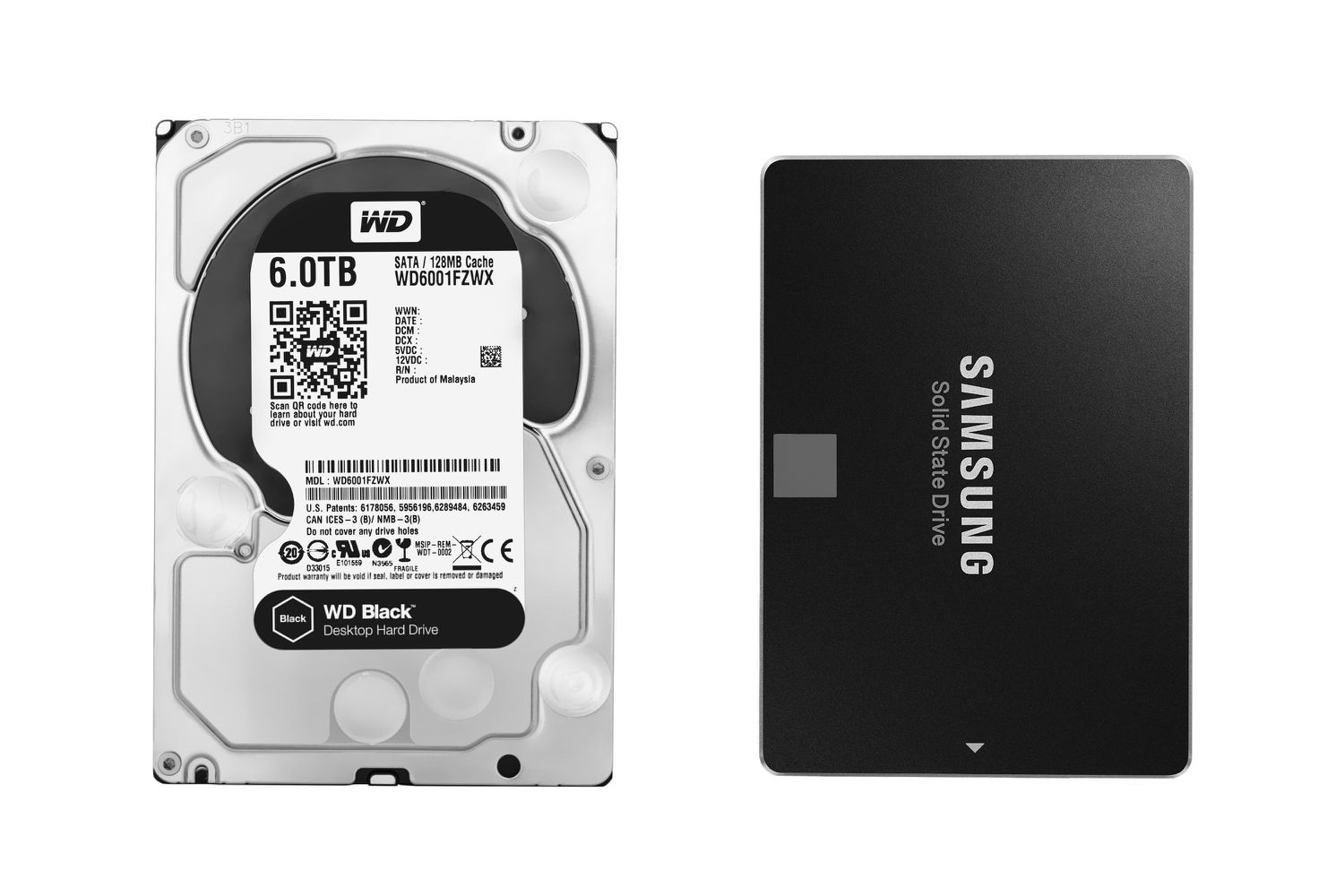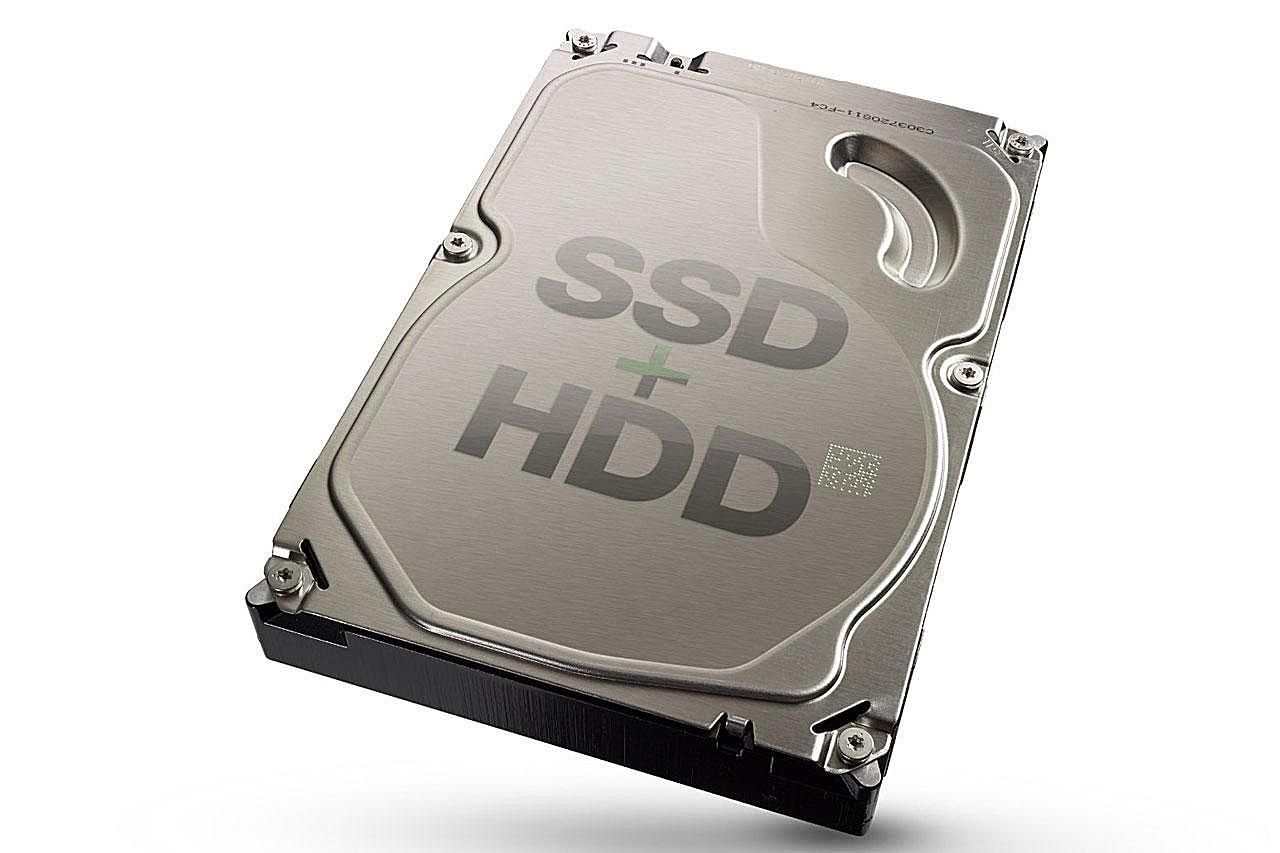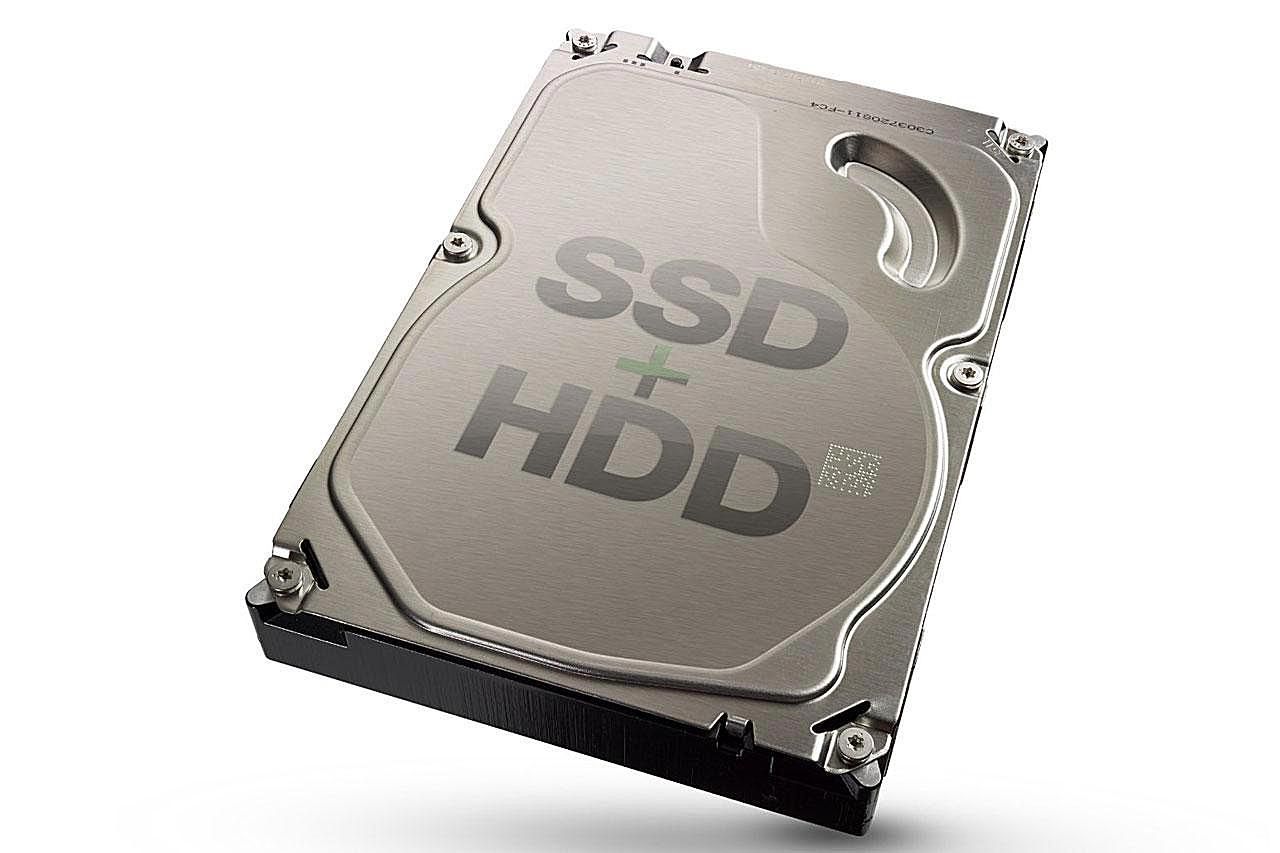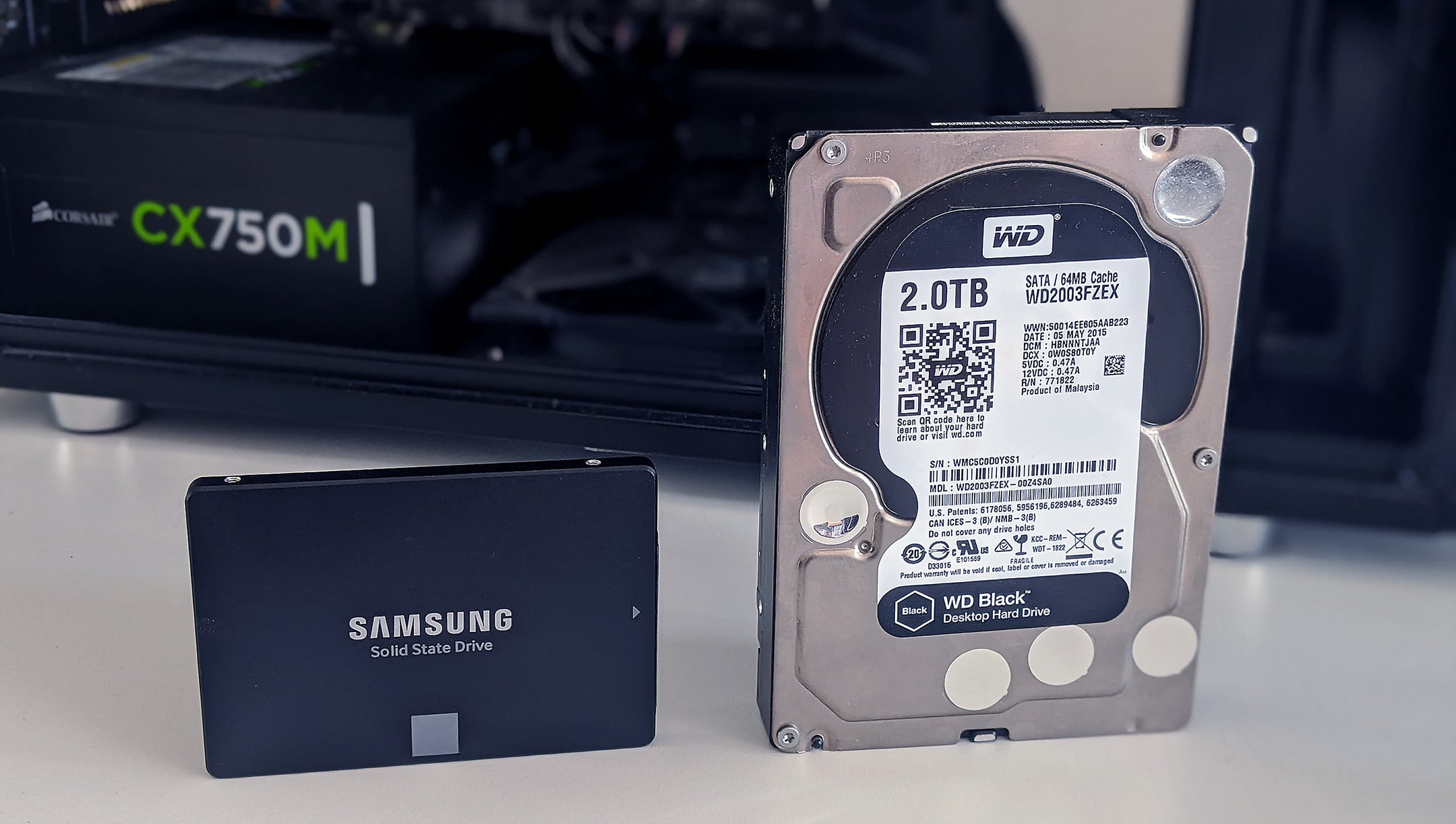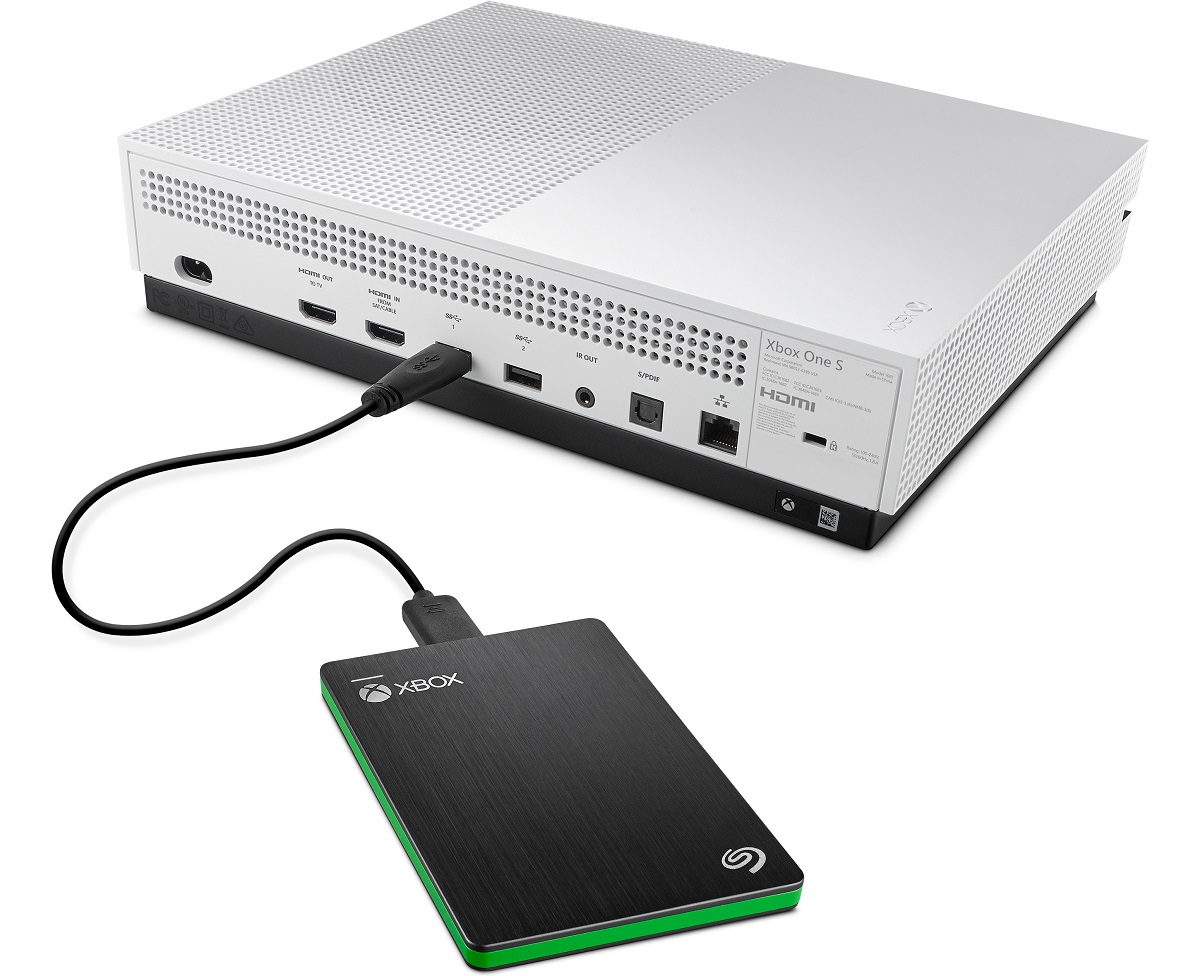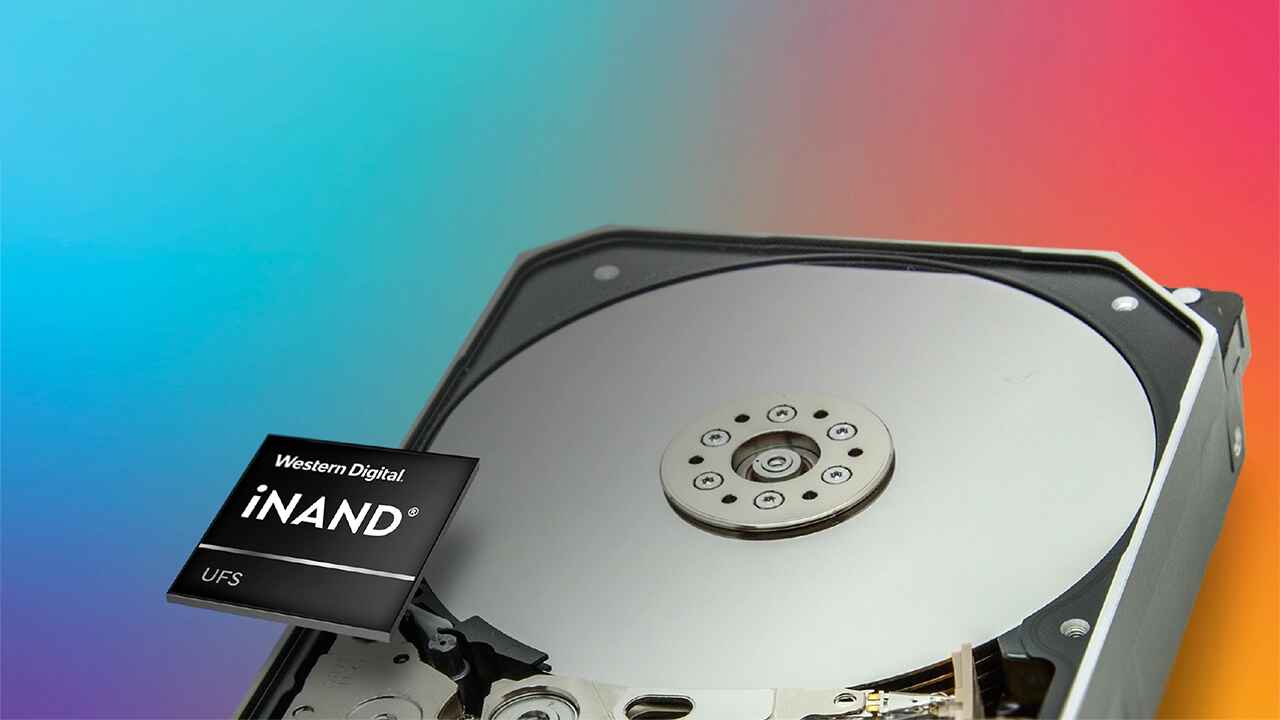Introduction
Welcome to the world of storage technology, where advancements are constantly being made to improve the performance and efficiency of our digital devices. One such innovation is the Hybrid SSD HDD, a hybrid storage solution that combines the best of solid-state drives (SSD) and hard disk drives (HDD). This powerful combination offers users a balance between speed, capacity, and affordability.
As technology evolves, so do our needs for storing large amounts of data and accessing it quickly. Traditional hard disk drives have provided us with ample storage capacity for years, but they are relatively slow compared to solid-state drives. On the other hand, SSDs are lightning-fast, but their capacity is often limited, and they come at a higher cost. This is where the hybrid SSD HDD comes into play.
A hybrid SSD HDD, also known as a hybrid drive or SSHD, leverages the strengths of both SSDs and HDDs to deliver a well-rounded storage solution. By combining the larger capacity of an HDD and the faster access times of an SSD, hybrid drives offer the best of both worlds. They are designed to intelligently store frequently accessed data on the SSD portion for quick retrieval, while less frequently used data is stored on the HDD portion.
The way a hybrid SSD HDD works is through an intelligent caching mechanism. As you use your computer or device, the drive analyzes your usage patterns and identifies the data that is accessed most frequently. This data is then automatically transferred to the SSD portion of the drive, allowing for faster access times. Over time, the drive adapts to your usage patterns and optimizes its caching algorithm to ensure that the most relevant data is always available at high speeds.
The benefits of using a hybrid SSD HDD are numerous. Firstly, you get the advantage of faster boot times and improved overall system performance. Applications and files stored on the SSD portion are accessed quickly, resulting in a more responsive user experience. Secondly, the larger storage capacity of the HDD portion allows you to store a vast amount of files, documents, and media without running out of space.
However, it’s important to note that hybrid drives also have a few drawbacks. While they offer faster performance compared to traditional HDDs, they still fall short of the blazing speed of dedicated SSDs. Additionally, the caching mechanism may take some time to adapt to your usage patterns, so initial performance gains may not be as significant. Furthermore, as a combination of two different technologies, hybrid drives can be more prone to failure compared to individual SSDs or HDDs.
What is a Hybrid SSD HDD?
A hybrid SSD HDD, also known as a hybrid drive or SSHD, is a storage device that combines the characteristics of both solid-state drives (SSD) and hard disk drives (HDD). It is designed to provide users with a balance between speed, capacity, and affordability. With a hybrid drive, you get the best of both worlds of storage technology.
Traditional hard disk drives have been the go-to storage solution for years due to their large capacity and affordable price. However, their mechanical nature causes slower read and write speeds compared to solid-state drives. On the other hand, SSDs offer lightning-fast performance with no moving parts, but they come at a higher cost and generally have a smaller storage capacity.
A hybrid SSD HDD overcomes the limitations of both types of drives by combining them into a single unit. The drive is divided into two main parts – a solid-state drive section and a hard disk drive section. The SSD section acts as a cache, storing frequently accessed data for quick retrieval, while the HDD section provides the bulk storage capacity.
So how does this hybrid combination work? The drive utilizes an intelligent caching mechanism that analyzes the usage patterns and identifies the frequently accessed data. This data is then automatically transferred to the SSD section, ensuring speedy access and improved performance. Meanwhile, less frequently accessed data remains in the HDD section, utilizing the larger storage capacity.
The hybrid SSD HDD leverages this caching mechanism to optimize performance. Over time, the drive adapts to the user’s usage patterns and continuously enhances the caching algorithm to ensure that the most important and frequently accessed data is always stored on the SSD section. This dynamic caching capability allows for faster boot times, rapid application launching, and improved overall system responsiveness.
One of the key advantages of a hybrid SSD HDD is its cost-effectiveness. Compared to a dedicated SSD, which can be significantly more expensive, the hybrid drive offers a more affordable option while still delivering noticeable performance improvements. It provides a viable solution for those who require both speed and capacity but are hesitant to invest in a full SSD or need the extensive storage capacity provided by an HDD.
While hybrid SSD HDDs offer impressive performance gains over traditional HDDs, it’s important to note that they still fall short of the blazing-fast speeds of dedicated SSDs. However, for the majority of users who prioritize a balance between performance and capacity, a hybrid drive is an excellent choice.
So, whether you’re a casual user looking for faster boot times and improved application performance or a professional requiring ample storage space without sacrificing performance, a hybrid SSD HDD can meet your storage needs. It combines the speed of an SSD, the capacity of an HDD, and the affordability of a hybrid solution, making it a compelling choice in the ever-evolving world of storage technology.
How does a Hybrid SSD HDD work?
A hybrid SSD HDD, or SSHD, works by combining solid-state drive (SSD) and hard disk drive (HDD) technologies into a single storage device. This combination allows users to benefit from both the speed of an SSD and the large storage capacity of an HDD. The way a hybrid SSD HDD works is through an intelligent caching mechanism that optimizes data storage and retrieval.
When data is written to a hybrid SSD HDD, it is first stored on the traditional hard disk drive portion of the drive. This HDD portion provides a larger storage capacity at a lower cost per gigabyte compared to SSDs. However, unlike a regular HDD, a hybrid drive also includes a small amount of solid-state memory (cache) built into it.
The intelligent caching mechanism in a hybrid SSD HDD monitors the usage patterns of the stored data. It identifies the frequently accessed data and copies it to the solid-state cache portion of the drive. This process happens automatically in the background, and the cache becomes populated with the most frequently used data over time.
As a result, when the system or an application requests data, the hybrid SSD HDD fetches it from the cache first. Since solid-state memory is much faster than traditional spinning disk technology, this leads to significantly faster data retrieval times. This caching process is dynamic and can adapt to changes in usage patterns, continually optimizing the data stored in the cache to provide the best performance.
It’s important to note that the cache in a hybrid SSD HDD is limited in size compared to a standalone SSD. Typical hybrid drives have a cache size ranging from 8GB to 128GB, depending on the model. The cache holds the most frequently accessed data, but less frequently used data remains on the HDD portion of the drive.
The hybrid SSD HDD also benefits from an advanced algorithm that determines which data to keep in the cache. The algorithm takes into account factors such as frequency of access, file size, and criticality to ensure that the most relevant and performance-critical data is stored in the cache. This adaptive algorithm continually optimizes the caching process to improve overall performance based on the user’s usage patterns.
In summary, a hybrid SSD HDD utilizes intelligent caching to store frequently accessed data in the faster solid-state memory cache, while less frequently used data remains on the larger capacity HDD portion of the drive. This combination of SSD and HDD technologies allows for a balance between speed and capacity, resulting in improved overall system performance.
Benefits of using a Hybrid SSD HDD
Using a hybrid SSD HDD, or SSHD, offers several benefits that make it an attractive storage solution for many users. By combining solid-state drive (SSD) and hard disk drive (HDD) technologies, hybrid drives provide a balance between speed, capacity, and affordability. Let’s explore the advantages of using a hybrid SSD HDD.
1. Improved Performance: The primary benefit of a hybrid SSD HDD is the improved performance it offers over traditional HDDs. By storing frequently accessed data in the solid-state cache, hybrid drives can provide faster read and write speeds compared to standard hard drives. This results in quicker boot times, reduced application loading times, and overall snappier system performance.
2. Ample Storage Capacity: Unlike dedicated SSDs that often have limited storage capacities, hybrid drives combine the larger storage capacity of HDDs with the performance benefits of SSDs. This allows users to store a significant amount of data, including documents, media files, and applications, without worrying about running out of space. It is an ideal solution for users who require both speed and capacity.
3. Cost-Effective: Hybrid SSD HDDs offer a more budget-friendly option compared to full SSDs. While SSDs can be expensive, especially for high-capacity models, hybrid drives provide performance gains at a more affordable price point. You can enjoy the advantages of faster performance without breaking the bank, making it a cost-effective choice for many users.
4. Intelligent Caching: The caching mechanism in hybrid SSD HDDs is designed to adapt to the user’s usage patterns. The drive identifies frequently accessed data and automatically stores it in the solid-state cache for quick retrieval. Over time, the drive optimizes the caching algorithm based on your patterns, ensuring that the most relevant and frequently used data is always available at high speeds.
5. Seamless Integration: Hybrid drives are designed to seamlessly integrate into existing systems without any additional requirements or software. They can be used as a direct replacement for traditional HDDs, requiring no extra configuration or setup. This makes upgrading to a hybrid SSD HDD a straightforward and hassle-free process for users.
6. Versatility: Hybrid SSD HDDs can be utilized in various devices, including desktop computers, laptops, gaming consoles, and external storage solutions. Their versatility allows users to enjoy improved performance across different platforms and applications, enhancing the overall user experience.
Overall, the benefits of using a hybrid SSD HDD make it an attractive choice for users who want a balance between speed, capacity, and cost-effectiveness. Whether you’re a casual user looking for faster performance or a professional needing ample storage space, a hybrid drive can provide the best of both worlds.
Drawbacks of using a Hybrid SSD HDD
While hybrid SSD HDDs offer notable advantages, they also have certain drawbacks that users should be aware of before making a decision. Understanding the limitations of using a hybrid drive can help you make an informed choice about whether it is the right storage solution for your needs. Let’s explore some of the drawbacks of using a hybrid SSD HDD.
1. Limited SSD Performance: While hybrid drives provide improved performance compared to traditional hard disk drives (HDDs), they still fall short of the blazing-fast speeds offered by dedicated solid-state drives (SSDs). The caching mechanism of a hybrid drive can significantly boost performance for frequently accessed data, but it may not match the consistent speed of a standalone SSD.
2. Caching Adaptation Process: When you first start using a hybrid SSD HDD, it takes some time for the caching mechanism to adapt to your usage patterns. Initially, the performance gains may not be as significant as expected. The drive needs to analyze your data usage and identify the most frequently accessed files before it can optimize the caching process. This means that you may experience a slight delay in realizing the full performance benefits of the hybrid drive.
3. Failure Risks: Hybrid drives combine two different technologies, SSD and HDD, into a single unit. This increases the risk of potential failure compared to standalone SSDs or HDDs. If either the SSD or HDD component of the hybrid drive malfunctions, it can lead to data loss or drive failure. It is crucial to maintain regular backups of your data to mitigate the risks associated with potential drive failure.
4. Limited Cache Size: The cache size of a hybrid SSD HDD is limited compared to dedicated SSDs. The cache typically ranges from 8GB to 128GB, depending on the model. While this cache is sufficient for storing frequently accessed data, it may not accommodate larger files or extensive data sets. If you work with large files, such as high-resolution videos or complex software applications, the cache may not be able to fully optimize performance for those files.
5. Performance Dependence on Usage Patterns: The effectiveness of a hybrid SSD HDD’s caching mechanism depends heavily on your specific usage patterns and data access habits. If you frequently access different sets of data or work with various applications simultaneously, the caching algorithm may struggle to adapt and provide optimal performance. In such cases, a dedicated SSD may be a more suitable choice to ensure consistent speed and performance.
It’s important to weigh these drawbacks against the benefits when considering a hybrid SSD HDD. For users who prioritize a balance between speed and capacity at an affordable price, the drawbacks of a hybrid drive may be outweighed by the overall advantages. However, if consistent high-speed performance or advanced data reliability is crucial to your needs, a dedicated SSD or HDD may be a better choice.
How to choose the right Hybrid SSD HDD for your needs
When selecting a hybrid SSD HDD, there are several factors to consider to ensure that it meets your specific requirements. The right choice depends on your usage patterns, storage needs, and budget. Here are some key considerations to help you choose the right hybrid drive for your needs.
1. Capacity: Assess your storage requirements and determine how much space you need for your files, applications, and media. Hybrid drives come in various capacities, so choose one that offers enough storage for your current and future needs. Remember that a portion of the drive’s capacity will be reserved for caching, so factor that in when making your decision.
2. Cache Size: The cache size plays a significant role in the performance of a hybrid SSD HDD. Consider the size of the cache when choosing a drive. Larger cache sizes generally offer better performance for frequently accessed data. However, keep in mind that larger caches may come with a higher price tag.
3. Performance Requirements: Evaluate your performance needs based on the type of tasks you will be performing. If you require fast and responsive performance for demanding applications or gaming, consider a hybrid drive with a larger SSD cache and faster read/write speeds. However, if you primarily engage in casual computing tasks, a hybrid drive with a smaller cache may suffice.
4. Budget: Determine your budget for the hybrid SSD HDD. Consider the performance and capacity trade-offs based on your financial constraints. Hybrid drives are typically more cost-effective than dedicated SSDs, but prices can vary depending on the brand, capacity, and cache size. Find the balance between performance and cost that suits your needs.
5. Manufacturer Reputation: Research the reputation of the manufacturer before making your purchase. Look for established and reputable brands that have a track record of producing reliable storage devices. Reading reviews and seeking recommendations from trusted sources can help you make an informed choice.
6. Compatibility: Ensure that the hybrid SSD HDD is compatible with your computer or device. Check the interface (e.g., SATA or NVMe) and ensure that your system supports it. Additionally, verify the physical dimensions of the drive to make sure it fits within your device’s available space.
7. Warranty and Support: Consider the warranty and support offered by the manufacturer. Look for drives that come with a warranty period of at least three years to ensure peace of mind. Additionally, check the manufacturer’s customer support channels in case you encounter any issues or need assistance.
In summary, choosing the right hybrid SSD HDD involves considering factors such as capacity, cache size, performance requirements, budget, manufacturer reputation, compatibility, and warranty. Assess your needs and prioritize accordingly to find the best hybrid drive that offers the right balance between performance, capacity, and cost for your specific requirements.
Conclusion
Hybrid SSD HDDs, or SSHDs, provide users with a storage solution that combines the speed of solid-state drives (SSDs) with the larger capacity and affordability of hard disk drives (HDDs). These drives offer improved performance, ample storage space, and cost-effectiveness. The intelligent caching mechanism in hybrid drives optimizes data access, benefiting users who require both speed and capacity.
While hybrid SSD HDDs have their advantages, they also have a few drawbacks to consider. They may not match the consistent high-speed performance of dedicated SSDs, and the caching adaptation process takes time. Additionally, there is a higher risk of drive failure due to the combination of two different technologies.
When selecting a hybrid SSD HDD, important factors to consider include capacity, cache size, performance requirements, budget, manufacturer reputation, compatibility, and warranty. By assessing these factors and prioritizing your needs, you can choose the right hybrid drive that meets your specific requirements.
In conclusion, hybrid SSD HDDs offer a balanced storage solution for users who seek a combination of speed, capacity, and affordability. They are a viable option for individuals looking to enhance their system performance without compromising on storage space. While they may not match the speed of dedicated SSDs, hybrid drives provide a noticeable performance boost over traditional HDDs.
Whether you’re a casual user who wants faster boot times and improved application performance or a professional requiring a balance between speed and capacity, a hybrid SSD HDD can serve as a reliable storage solution. Through their innovative caching mechanisms, hybrid drives bridge the gap between SSDs and HDDs, making them a versatile option for a wide range of users and applications.







